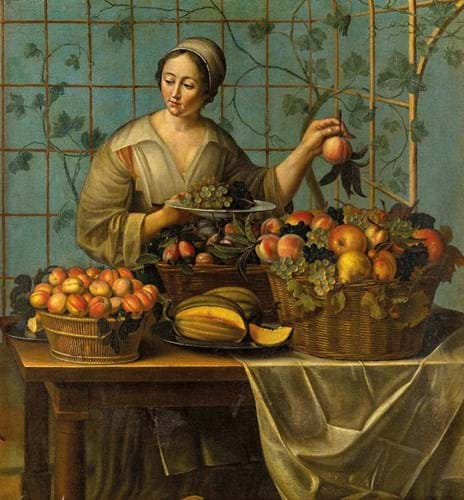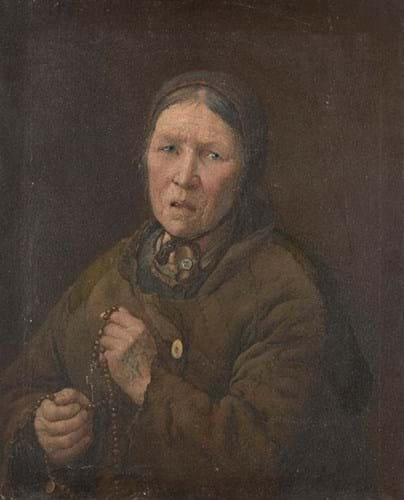Two of the most popular works in the London auction came from the collection of an important Greek shipping family. First up was a 4ft x 3ft 4in (1.21 x 1.02m) canvas The Fruit Seller, which was attributed to the French artist Louise Moillon (c.1610-96).
Her oeuvre consists of some 75 paintings and this recently discovered work has never previously been sold at auction. Although it had been heavily restored over the centuries – it bore the monogram of the last restorer and the date 1976 – the bidders obviously thought it was worth putting up the money.
After a short bidding tussle, it found a French buyer, whose closing bid of £46,000 via thesaleroom.com was £6000 above the lower guide.
Meanwhile, since 2002, when it was sold by Christie’s in London, William Linton’s (1791-1876) View of the Acropolis had belonged to the aforementioned Greek collection. Like many of Linton’s paintings, the 15 x 21in (38 x 54cm) canvas was heavily influenced by artists such as Claude Lorrain, Claude-Joseph Vernet, and Richard Wilson. The hammer of £11,000 was almost four times the lower estimate.
Political activist
A British collector consigned a late 19th century Portrait of an Old Woman Holding a Rosary. Dated 1889, the 2ft 9in x 2ft 4in (85 x 70cm) canvas was the work of the Polish-Lithuanian artist Wincenty Sleńdziński (1838-1909).
He originally worked as a church painter, executing frescoes in his home country. Due to his political activity and his membership of the secret Lithuanian Provincial Committee, the aim of which was to achieve independence from Russia, he had numerous conflicts with the authorities.
After several years in internal exile, he was eventually allowed to move to Dresden, where he enjoyed considerable success as a portrait painter. After an imperial amnesty, Sleńdziński later returned to Vilnius where he spent the rest of his life.
The starting price for the portrait of £1200 proved to be far below the current market value, which was finally set at £22,000.

















